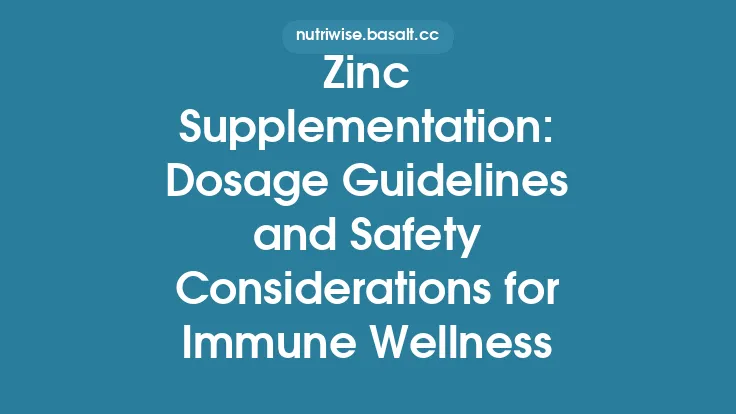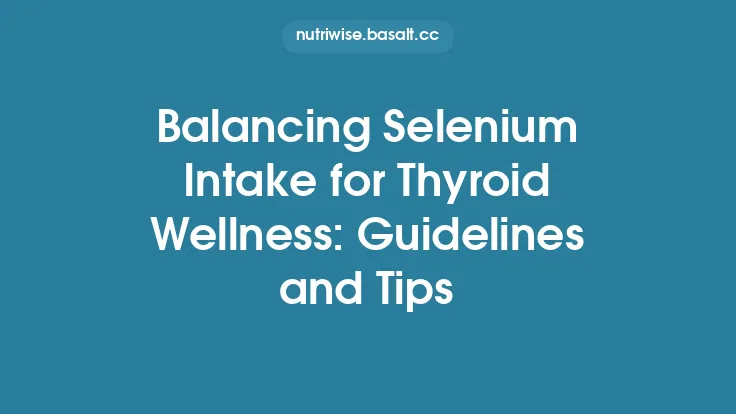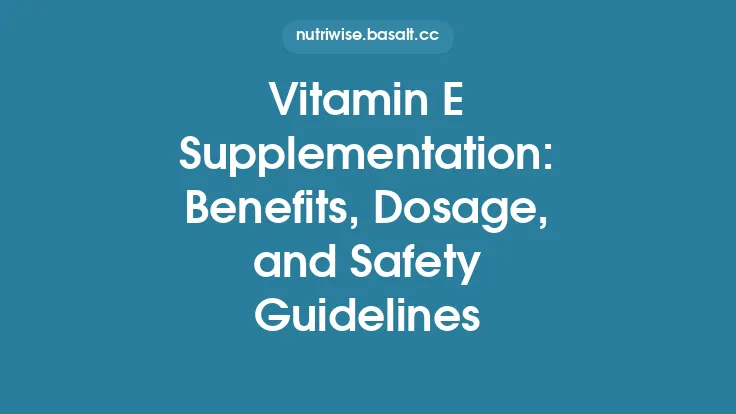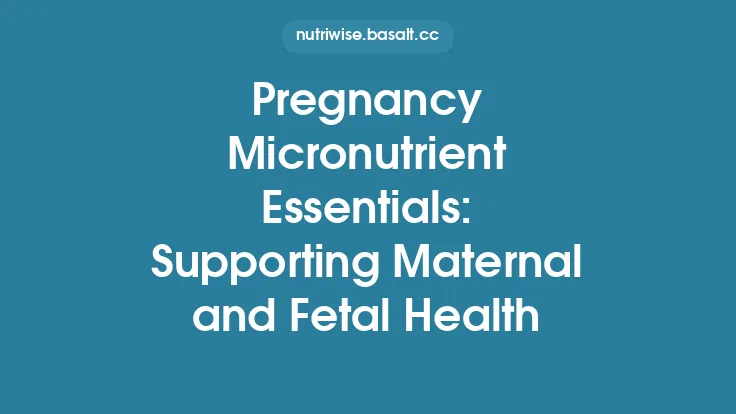Pregnancy is a unique physiological state that brings about profound hormonal, metabolic, and circulatory changes. These alterations can modify how the body absorbs, distributes, metabolizes, and excretes nutrients and bioactive compounds. Consequently, supplements that are generally safe for the non‑pregnant population may behave differently—or even become hazardous—when taken during gestation. Understanding these nuances is essential for protecting both maternal health and fetal development.
Why Supplement Interactions Matter in Pregnancy
- Altered Absorption
- Gastrointestinal motility slows, potentially prolonging the contact time of nutrients with the intestinal mucosa.
- Increased plasma volume dilutes circulating nutrients, affecting the concentration gradients that drive absorption.
- Metabolic Shifts
- Elevated estrogen and progesterone influence hepatic enzyme activity (e.g., CYP450 isoforms), which can accelerate or decelerate the metabolism of certain vitamins and herbal constituents.
- Enhanced renal clearance for some water‑soluble vitamins may require higher intake to maintain adequate levels.
- Placental Transfer
- The placenta selectively transports nutrients to the fetus. Some supplements cross readily (e.g., folate), while others are limited (e.g., high‑dose vitamin A). Interactions that alter maternal serum concentrations can therefore impact fetal exposure.
- Safety Margins Narrow
- The therapeutic window for many micronutrients narrows during pregnancy. A dose that is benign for an adult may become teratogenic or cause maternal toxicity when the fetus is also dependent on the same nutrient.
Core Prenatal Supplements and Their Interaction Profiles
| Supplement | Primary Role in Pregnancy | Common Co‑supplements | Interaction Mechanism | Practical Guidance |
|---|---|---|---|---|
| Folic Acid (400–800 µg) | Neural tube development | Vitamin B12, iron | Competes for intestinal transporters (RFC, PCFT) at very high doses; B12 deficiency can mask folate excess | Maintain recommended dose; avoid mega‑doses (>1 mg) unless prescribed |
| Iron (ferrous sulfate 27 mg elemental) | Hemoglobin synthesis, fetal growth | Calcium, zinc, magnesium, phytates | Calcium and other divalent cations inhibit non‑heme iron absorption via competition at DMT1 transporter | Separate iron from calcium‑rich meals or supplements by ≥2 h |
| Calcium (1,000–1,300 mg) | Skeletal development, maternal bone preservation | Iron, magnesium, vitamin D | High calcium can reduce iron absorption; magnesium may compete for renal reabsorption | Split calcium dose (e.g., 500 mg twice daily) and stagger from iron |
| Vitamin D (600–2,000 IU) | Calcium homeostasis, immune modulation | Magnesium, vitamin K2 | Magnesium is a co‑factor for vitamin D activation; vitamin K2 synergizes with vitamin D for bone health | Co‑administer with magnesium‑rich foods; monitor serum 25(OH)D |
| Omega‑3 DHA (200–300 mg) | Neurodevelopment, anti‑inflammatory | High‑dose vitamin E | Both are lipid‑soluble; excess vitamin E may alter DHA incorporation into cell membranes | Take DHA with meals containing fat; avoid megadoses of vitamin E (>400 IU) |
| Iodine (150 µg) | Thyroid hormone synthesis | Selenium, goitrogenic foods (e.g., soy) | Selenium supports deiodinase activity; goitrogens can blunt iodine utilization | Ensure adequate selenium (55 µg) and limit excessive soy intake |
| Vitamin B12 (2.6 µg) | Red blood cell formation, neurologic health | Folate | High folate can mask B12 deficiency symptoms | Keep B12 intake aligned with folate; consider B12 supplementation for vegans |
Herbal and Non‑Traditional Supplements: A Cautious Approach
Herbal products are often perceived as “natural” and therefore safe, yet many contain bioactive compounds that can interfere with pregnancy physiology.
| Herbal Supplement | Known Pregnancy Risks | Interaction Concerns | Recommendation |
|---|---|---|---|
| St. John’s Wort | Potential teratogenicity; uterine irritability | Induces CYP3A4, reducing plasma levels of vitamin D, progesterone, and certain prenatal vitamins | Avoid throughout pregnancy |
| Ginkgo biloba | Antiplatelet effect, possible bleeding risk | May potentiate anticoagulant activity of omega‑3 fatty acids | Avoid unless under specialist supervision |
| Echinacea | Immunomodulatory; limited safety data | Can alter cytokine response, potentially affecting maternal‑fetal immune tolerance | Use only if prescribed |
| Black Cohosh | Uterine contractility | May synergize with progesterone‑modulating supplements | Contraindicated |
| Red Raspberry Leaf | Traditionally used to tone uterus; evidence mixed | May enhance uterine contractility when combined with high‑dose calcium or magnesium | Use only in late second/third trimester under obstetric guidance |
| Turmeric (curcumin) | High doses may affect platelet aggregation | Interacts with iron absorption and vitamin K metabolism | Limit to culinary amounts; avoid concentrated extracts |
Key Takeaway: Unless a herb has been explicitly endorsed by a qualified obstetrician, it should be excluded from the prenatal regimen.
Timing and Scheduling Strategies to Minimize Interactions
- Morning vs. Evening Dosing
- Iron: Best taken on an empty stomach in the morning; if gastrointestinal upset occurs, a small amount of fruit juice (rich in vitamin C) can enhance absorption.
- Calcium: Evening dosing aligns with nocturnal bone remodeling and reduces competition with iron.
- Meal Composition
- Vitamin C‑rich foods (citrus, strawberries) boost non‑heme iron absorption.
- High‑fat meals improve absorption of fat‑soluble vitamins (A, D, E, K) and DHA.
- Avoid simultaneous intake of high‑phytate foods (whole grains, legumes) with iron supplements; consider soaking or fermenting to reduce phytate content.
- Spacing Between Supplements
- ≥2 hours between iron and calcium, zinc, magnesium, or high‑dose multivitamins.
- ≥30 minutes between vitamin D and high‑dose vitamin A (to prevent competitive inhibition of retinol binding protein).
Laboratory Monitoring: When and What to Check
| Parameter | Indication for Testing | Frequency | Target Range (Pregnant) |
|---|---|---|---|
| Serum Ferritin | Suspected iron deficiency or overload | First trimester, then each trimester if on iron | 30–200 ng/mL |
| Serum 25‑OH Vitamin D | Low sun exposure, high latitude, or high supplement dose | Once per trimester | ≥30 ng/mL (≥75 nmol/L) |
| Serum Calcium (Ionized) | High calcium supplement dose | Each trimester | 1.12–1.32 mmol/L |
| Thyroid Stimulating Hormone (TSH) & Free T4 | Iodine supplementation >150 µg/day | First trimester, then as indicated | TSH 0.1–2.5 mIU/L |
| Serum Vitamin B12 | Vegetarian/vegan diet, high folate intake | First trimester, then if symptomatic | 200–900 pg/mL |
| Serum Retinol (Vitamin A) | High-dose vitamin A supplementation | Only if >10,000 IU/day is used (generally discouraged) | ≤30 µg/dL |
Regular monitoring allows clinicians to adjust dosages before toxicity or deficiency manifests, preserving the narrow safety margins of pregnancy.
Practical Checklist for Expectant Parents
- Create a Master List of all supplements, prenatal vitamins, and herbal products you are taking. Include brand names and dosages.
- Consult Early: Bring the list to your first prenatal visit. Ask your obstetrician or a registered dietitian to review it.
- Prioritize Proven Prenatal Formulas: Use a single, reputable prenatal vitamin that already contains the recommended amounts of folic acid, iron, calcium, vitamin D, DHA, and iodine. This reduces the need for multiple separate supplements.
- Separate Iron and Calcium: Schedule iron in the morning (empty stomach) and calcium in the evening (with dinner or a bedtime snack).
- Add Vitamin C Strategically: Pair iron with a glass of orange juice or a vitamin C supplement to boost absorption.
- Limit Herbal Use: Discontinue any non‑prescribed herbal products unless cleared by your healthcare provider.
- Watch for Symptoms:
- *Iron overload*: Nausea, constipation, dark stools, joint pain.
- *Calcium excess*: Nausea, vomiting, constipation, kidney stones.
- *Vitamin A toxicity*: Headache, blurred vision, bone pain.
- *Excessive vitamin D*: Hypercalcemia symptoms (polyuria, polydipsia, weakness).
Seek medical advice promptly if any of these arise.
- Re‑evaluate Each Trimester: Nutrient needs evolve; what was appropriate in the first trimester may need adjustment later.
Frequently Asked Questions (FAQ)
Q1: Can I take a standard adult multivitamin instead of a prenatal vitamin?
A: Adult multivitamins often lack the higher folic acid dose (400–800 µg) and adequate iron (27 mg) required during pregnancy. They may also contain vitamin A levels that exceed the safe upper limit for pregnant women. A prenatal formulation is specifically calibrated for gestational needs.
Q2: I’m a vegan; do I need extra B12 and iron?
A: Yes. Plant‑based diets can be low in bioavailable iron and vitamin B12. A prenatal vitamin with methylcobalamin (B12) and a well‑absorbed iron form (ferrous bisglycinate) is advisable. Pair iron with vitamin C‑rich foods to improve uptake.
Q3: Is it safe to take a high‑dose omega‑3 supplement (e.g., 1 g DHA) in the third trimester?
A: Doses up to 1 g/day are generally considered safe and may reduce the risk of preterm birth. However, ensure the product is purified to remove mercury and other contaminants, and avoid concurrent high‑dose vitamin E (>400 IU) which can affect platelet function.
Q4: My doctor prescribed a calcium supplement of 1,200 mg/day. Should I still take iron?
A: Yes, but separate the dosing times. Take iron in the morning and calcium with dinner or before bedtime. This spacing prevents the calcium from inhibiting iron absorption.
Q5: I’m taking a prenatal vitamin that already contains iodine. Should I also take a separate iodine supplement?
A: Typically not. The combined iodine content should stay within the recommended 150–220 µg/day range. Excess iodine can disrupt thyroid function. Only add extra iodine if a deficiency is documented.
Summary of Essential Guidelines
- Use a single, evidence‑based prenatal vitamin as the foundation of your supplement regimen.
- Identify and separate antagonistic nutrients (e.g., iron vs. calcium, iron vs. zinc) by at least 2 hours.
- Enhance absorption with strategic food pairings: vitamin C with iron; dietary fat with fat‑soluble vitamins and DHA.
- Avoid unverified herbal products unless explicitly cleared by a qualified obstetric professional.
- Monitor key laboratory values each trimester to catch early signs of deficiency or excess.
- Adjust dosages as pregnancy progresses, recognizing that nutrient requirements shift across trimesters.
- Maintain open communication with your healthcare team, providing a complete list of all supplements and over‑the‑counter products you use.
By adhering to these evidence‑based principles, expectant mothers can navigate the complex landscape of supplement interactions safely, supporting optimal maternal health and fostering the best possible environment for fetal growth and development.





